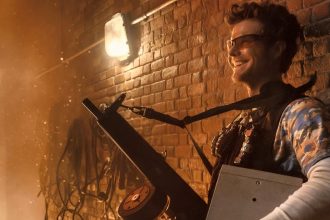Leonardo da Vinci, arguably the greatest painter who ever lived abandoned his iconic painting named The Adoration of the Magi a year after he started it. With the iconic painting now in the process of being cleaned in Florence, art restorers try to decipher what was going on in da Vinci’s mind when he left it unfinished.
“The fascination of this project was seeing something we were not supposed to see, standing behind the artist and imagining what the final version could have looked like,” said Patrizia Riitano, one of the two restorers who cleaned it. Started in 1481 when da Vinci was 29, the painting was left by the artist in various stages of conception and development.
The painting on wood, measuring about 2.5 by 2.5 metres depicts the three wise men, who paid tribute to the infant Jesus in Bethlehem, and also includes a riot of human figures, battling horses, architectural designs, landscapes and skies. Done on 10 slabs of wood glued together, it has blank areas, areas with under-drawings, and sections in advanced stages.
“This is, perhaps, the most quintessential work-in-progress in the history of art,” said Cecilia Frosinini, one of the directors of the ongoing restoration of the work, which is slated to return to Florence’s Uffizi Gallery next year.
Da Vinci received the commission to paint an altar piece depicting the Adoration from the monks of the monastery of San Donato a Scopeto near Florence. He stopped abruptly when he left to take up an offer of steady income from the Dukes of Milan
The current restoration project, which began three years ago, has removed much of the dull, oxidised varnish as well as traces of past restoration attempts, revealing many previously hidden details, facial expressions and subtleties of light and shadow. There are sections where the same horse’s head is drawn in various positions, where horses in battle still have three-hind legs because da Vinci still had not decided which would go and which would stay. After the wood backing of the painting is restored, it is due to return to a special room in the Uffizi, where it will be on display with two other da Vinci works.





